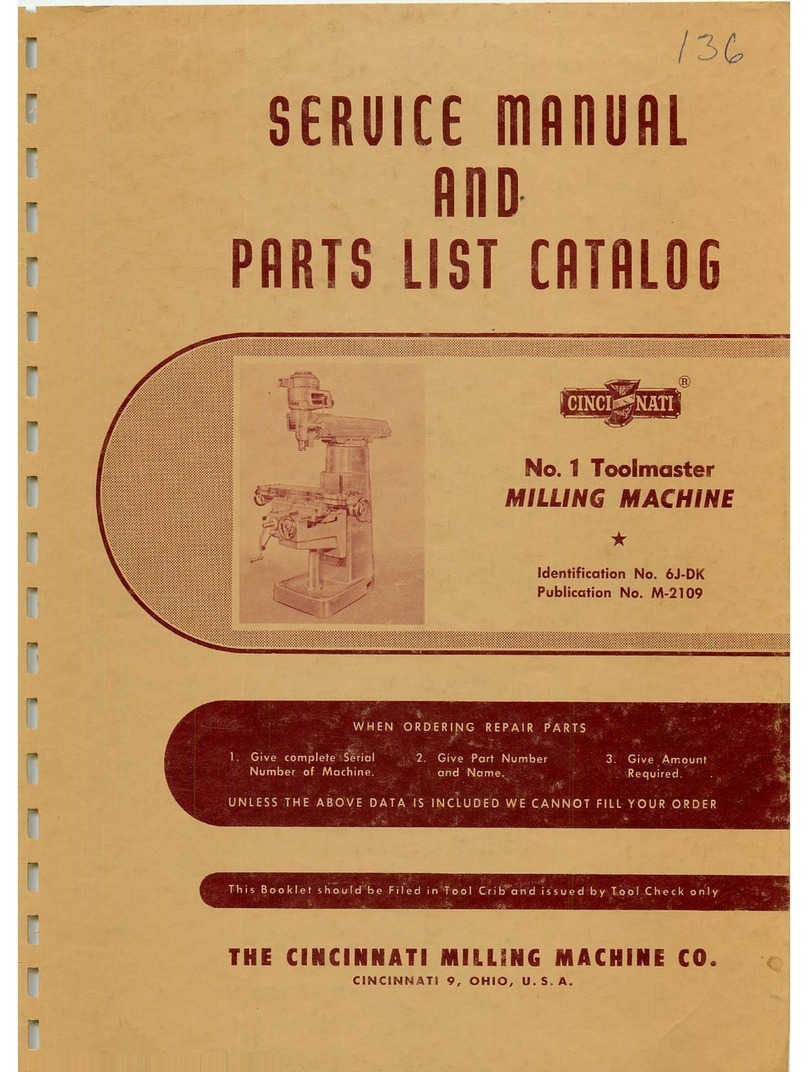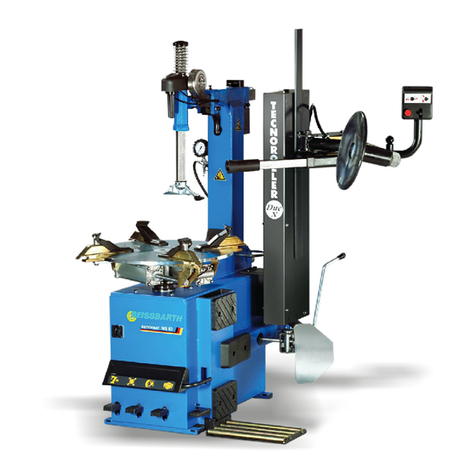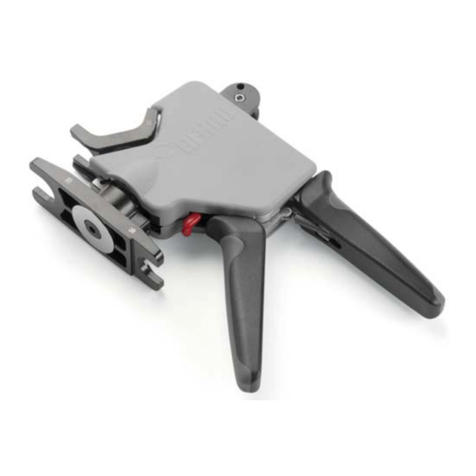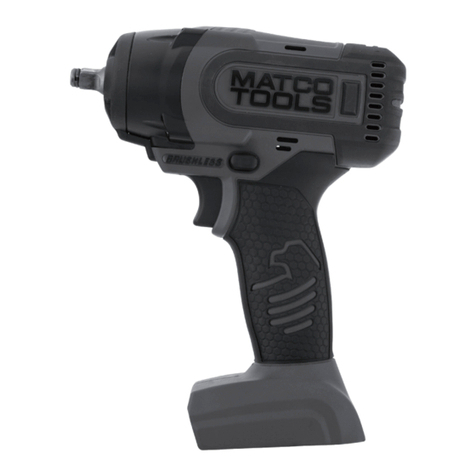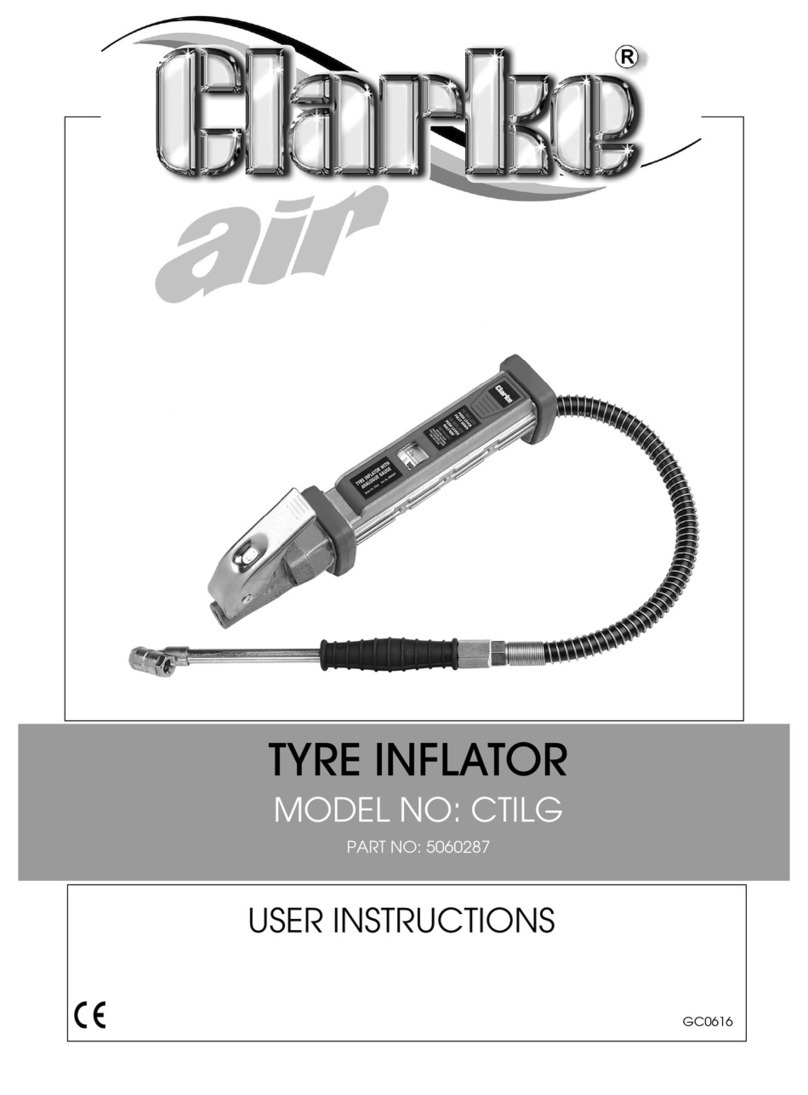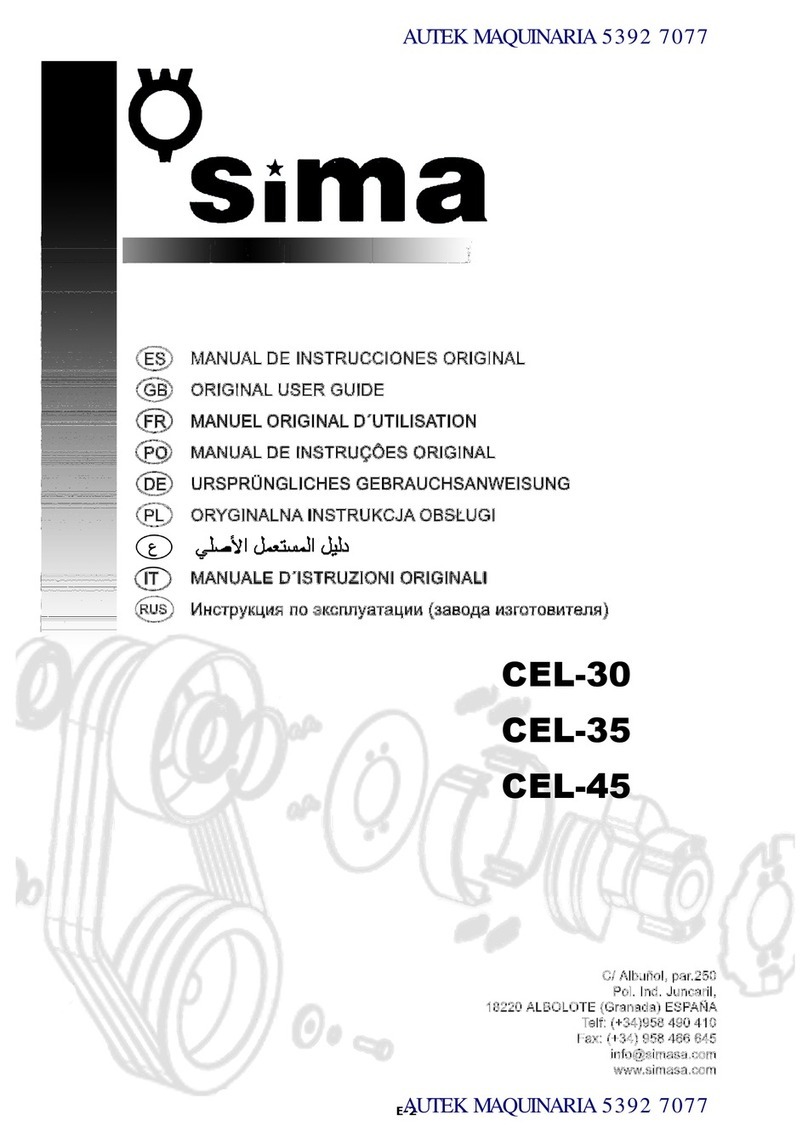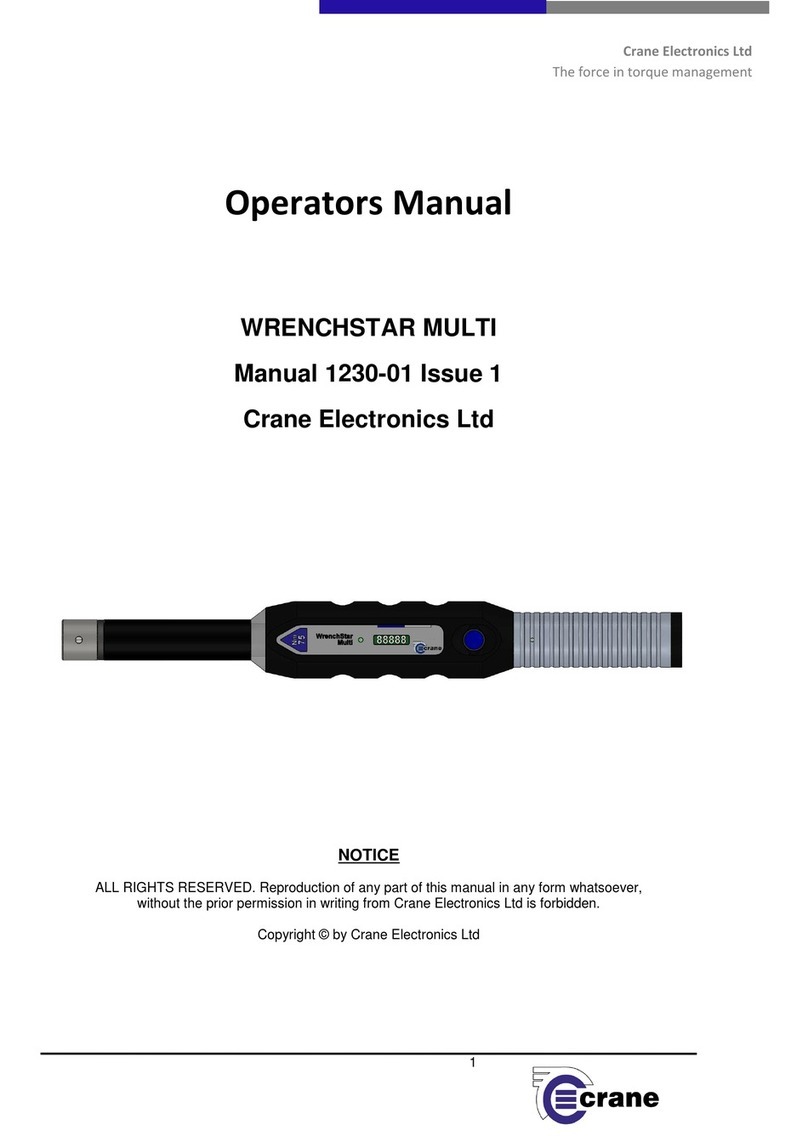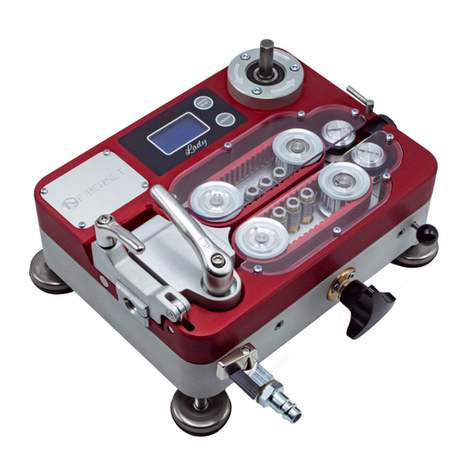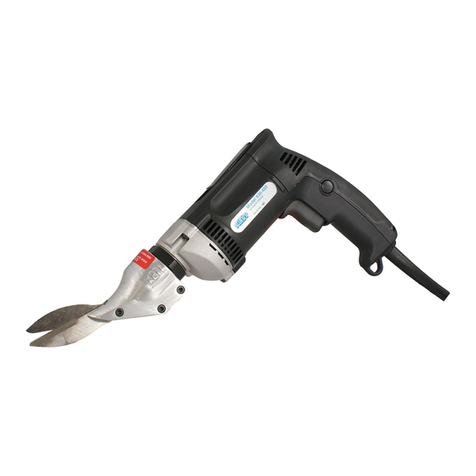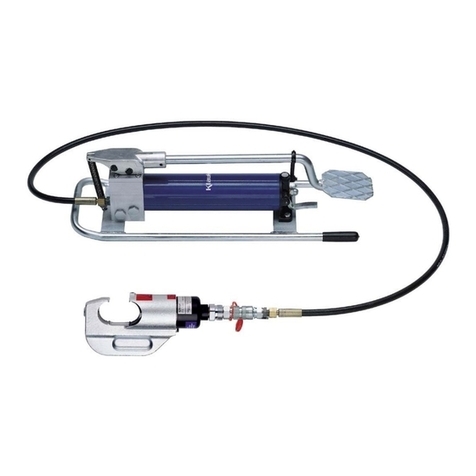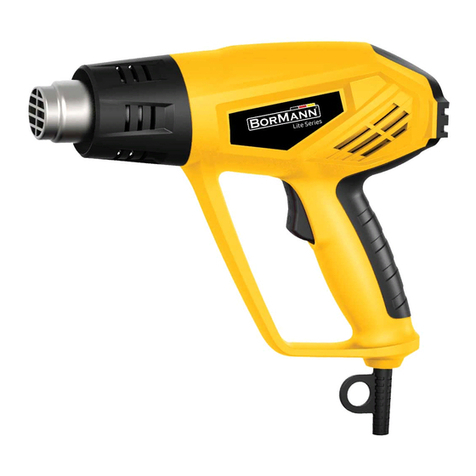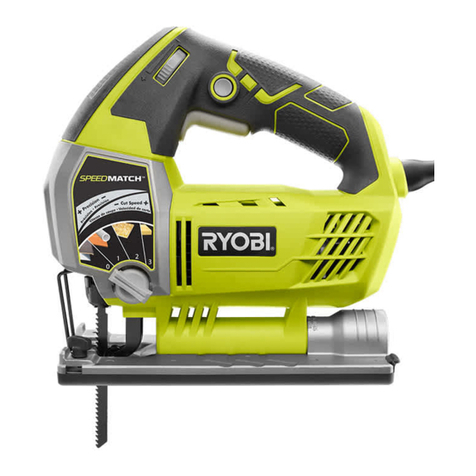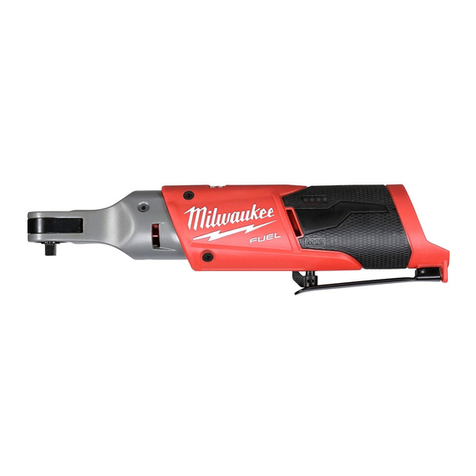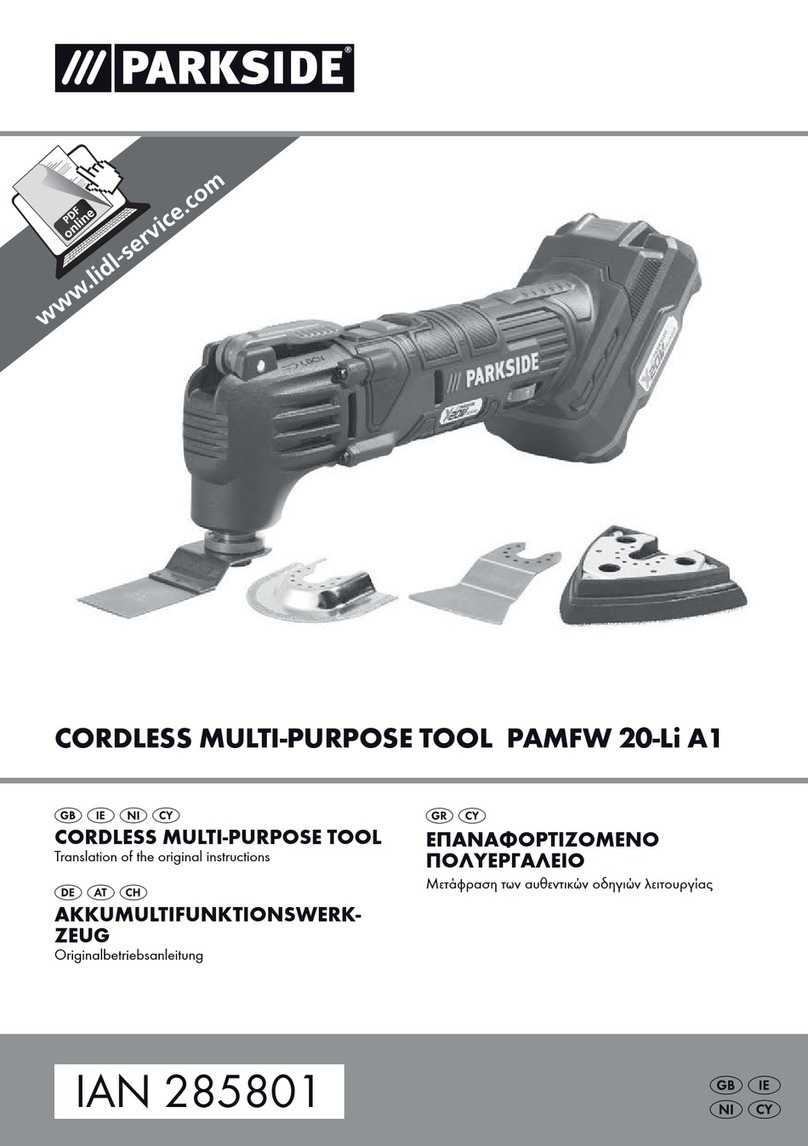Cincinnati Goform 40 GX Series Use and care manual

EM-566 (R-09-16) COPYRIGHT 2016
CINCINNATI INCORPORATED
COPYRIGHT 2017
CINCINNATI INCORPORATED
EM-566 (R-05-17)
CINCINNATI INCORPORATED
C I N C I N N A T I, OHIO 4 5 2 1 1
OPERATION, SAFETY AND MAINTENANCE MANUAL
GOFORM ELECTRIC PRESS BRAKE


SECTION X : TITLE CONTENTS
EM-566 (R-05-17)
GOFORM PRESS BRAKE CONTENTS
INTRODUCTION
SECTION 1 IDENTIFICATION
SECTION 2 INSTALLATION
UNLOADING ..................................................................................................2-1
LIFTING AND MOVING..................................................................................2-1
LEVELING ......................................................................................................2-2
LUBRICATION................................................................................................2-2
ELECTRICAL CONNECTION ........................................................................2-2
SECTION 3 SAFETY
SAFETY RECOMMENDATIONS FOR PRESS BRAKE OPERATION...........3-1
LOCKOUT / TAGOUT – POTENTIAL HAZARDOUS ENERGY .....................3-1
RULES FOR SAFE OPERATION...................................................................3-3
INSTALLING, REMOVING, AND TRANSFERRING TOOLING (DIES)..........3-4
SAFETY SIGNS .............................................................................................3-5
PRESS BRAKE OPERATOR SAFETY GUIDELINES....................................3-7
SAFETY MAINTENANCE CHECK.................................................................3-7
SECTION 4 SPECIFICATIONS
PERFORMANCE AND RATINGS ..................................................................4-1
SPECIFICATIONS..........................................................................................4-1
PRINCIPLE OF OPERATION.........................................................................4-1
DEFINITION OF TERMS................................................................................4-1
SECTION 5 SETUP AND USE
PRESS BRAKE TOOLING .............................................................................5-1
TYPES OF DIES ............................................................................................5-2
TOOL INSTALLATION .............................................................................5-3
OPERATING TECHNIQUES ..........................................................................5-6
RUNNING.................................................................................................5-6
SPEED CHANGE/FORMING SPEED......................................................5-7
REMOVING TOOLING...................................................................................5-7
SECTION 6 MACHINE CONTROLS
PC CONTROL ................................................................................................6-1
LCD TOUCHSCREEN DISPLAY..............................................................6-1
SWITCHES AND BUTTONS ....................................................................6-1
CONTROL ON-OFF KEYSWITCH...........................................................6-2
RAM UP BUTTON....................................................................................6-2
EMERGENCY STOP (E-STOP) BUTTON ...............................................6-2
MAIN DISCONNECT SWITCH.................................................................6-3
ETHERNET CONNECTION .....................................................................6-3
SECTION 7 OPERATION
SEE SUPPLEMENT MANUAL EM-508 OR ONLINE HELP ..........................7-1
SECTION 8 OPTIONS

EM-566 (R-05-17)
SECTION 9 MAINTENANCE AND ADJUSTMENTS
LOCKOUT / TAGOUT PROCEDURE.............................................................9-1
UNLOCK/RESTART PROCEDURE ...............................................................9-1
SETTING THE TILT SWITCHES ...................................................................9-1
CHECKING & ADJUSTING THE SWIVEL END-GUIDE BEARING ..............9-2
LUBRICATION ...............................................................................................9-3
BACKAGES .............................................................................................9-3
ELECTRICAL..................................................................................................9-4
X-AXIS MAINTENANCE.................................................................................9-4
Z-AXIS MAINTENANCE.................................................................................9-4
R-AXIS MAINTENANCE ...............................................................................9-5
TROUBLESHOOTING ...................................................................................9-6
LCD DISPLAY ERROR MESSAGES .......................................................9-6
SECTION 10 SERVICE AND PARTS
ORDERING REPAIR PARTS ......................................................................10-1
RETURNING PARTS FOR CREDIT.............................................................10-1
SERVICE......................................................................................................10-1
TECHNICAL TRAINING ...............................................................................10-1

INTRODUCTION
CINCINNATI GOFORM ELECTRIC PRESS BRAKE
The GOFORM is an electrically driven press brake. Optical Scales (encoders) constantly monitor the
bed-to-ram position, feeding this information to the Control. The Control is a self-contained industrial PC
with an integrated LCD touchscreen and display, USB ports, Operator Control keyswitch, “MAIN DRIVE
START”, “MAIN DRIVE STOP”, and RAM UP buttons. The program controls the vertical movement of
the ram and movement of the backgage. After a program is entered either the machine can be run or
the program stored in internal memory. The GOFORM PC Control allows an individual job to be quickly
set up and run as well as complicated, multi-bend parts or long run jobs. After a program is run, the
program and related setup information can be saved for future use.
PART QUALITY
The following factors affect part quality:
• Press Brake condition and repeatability
• Operator ability
• Condition of tooling
• Quality of material.
CINCINNATI machines are designed to be rugged and durable. However, improper adjustment or lack
of maintenance can reduce the quality of parts produced on that machine. These factors may also affect
the repeatability of the machine. A machine that will not consistently reverse at the same point or will
drift out-of-level will not produce uniform parts.
Operator ability obviously affects part quality and production rate. CINCINNATI provides many
design features in the machine and optional accessories to aid even the most inexperienced operator
to produce consistent parts. The operator or setup person must select the best tooling from those
available. The type of gaging, material supports or other special equipment will affect how the part is
produced. Selecting the proper bend sequence is important to obtain quality parts and for operator
safety. CINCINNATI offers both Operator and Maintenance training programs at our factory to address
these problems. This training may cover subjects from the basics of forming to the use of the machine’s
computer controls.
Worn, damaged, or poor quality dies or ller blocks can directly affect part quality. Using good tooling,
selecting the correct tooling for the job, and setting them up properly can produce good part quality.
Quality of material can affect angular tolerances of the bend. This is due to normal material thickness
variations found in commercial steels as well as hard and soft spots in the metal. Using a good grade
of material and the proper tooling setup will minimize the variations.
The contents of this manual will assist in understanding the operation, safe use, and maintenance of
the CINCINNATI GOFORM Electric Press Brake. Read this manual before operating the press brake.

MANUAL GUIDE
To get the maximum benet of your new CINCINNATI INCORPORATED machine, read this manual thoroughly
and refer to it often for guidance and information.
IMPORTANT: Before you operate the machine, read and understand thoroughly, Section 3 on Safety.
SIGNAL ICONS
This manual contains important icons that are associated with a signal word like Danger,” or “Warning,” or “Note”.
The icon and/or signal word indicate the severity of the condition or situation. Be sure to read these statements
and take special care to follow the instructions.
SIGNAL WORD DESCRIPTION ICON
DANGER
Means that there is a condition or situation
that will cause death or severe injury if you
do not follow the instructions given.
WARNING
Means that there is a condition or situation
that will cause moderate injury if you do
not follow the instructions given.
CAUTION
Means that minor injury or machine
damage could occur if you do not follow the
instructions given. You may also have to
start a procedure over if you do not follow
the instructions in a caution statement.
IMPORTANT
Means that the text gives additional
information that must be followed for
safety or other signicant reason.
NOTE Means that the text gives additional
information, clarication, or helpful hints.

1-1 EM 566 (R-05-17)
SECTION 1 IDENTIFICATION
1. END GUARDING
2. CONTROL PANEL
3. RAM
4. RAM NOSE / DIE CLAMP
5. BED TOP
6. EMERGENCY STOP
7. PALMBUTTONS
8. SAFEGUARDING DEVICE
9. FILLER BLOCK (DIE HOLDER)
10. FOOTSWITCH
Figure 1-1 Front View
3
5
1
9
4
27
8
6
10

1-2
EM-566 (R-05-17)
1. ELECTRICAL ENCLOSURE
2. DRIVE ASSEMBLY (BEHIND GUARDING)
3. BACKGAGE
4. MOUNTING FEET
5. CABINET AIR CONDITIONER
6. CONTROL ENCLOSURE
7. ETHERNET PORT
8. REAR GUARDING
Figure 1-2 Rear View
8
1
2
3
4
6
5
7

1-3 EM-566 (R-05-17)
1. CONTROL ON/OFF
2. MAIN DRIVE START
3. MAIN DRIVE STOP
4. RAM UP
5. NEXT RAM MOVEMENT UP/DOWN
(TOUCH SCREEN)
6. EMERGENCY STOP
Figure 1-3 Control Panel
5
6
1
2
3
4

1-4
EM-566 (R-05-17)

2-1 EM-566 (R-05-17)
SECTION 2 INSTALLATION
UNLOADING
After receiving the CINCINNATI GOFORM, carefully remove the contents of the one or more boxes shipped with
the machine. All of the machine’s optional accessories and small parts are in these boxes. Check all of these parts
with the packing list. Any claims for shortages should be made within ten days. Remove all shipping paper from
the wrapped parts of the machine.
LIFTING AND MOVING
CINCINNATI INCORPORATED recommends that professional riggers be employed to handle the machine.
This is to guard against injury to personnel and prevent damage to the machine.
The machine can be handled by a crane or fork truck of sufcient capacity with chains or cables of adequate size
(refer to American Society of Mechanical Engineers B30.9). Shipping weight of the machine is listed on the Bill of
Lading for the shipment. Check this weight carefully before lifting or handling. Use chains or cables adjusted to
the proper length for even lifting. The chains or cables should be long enough to minimize the side loading on the
housings. If short cables are used, t a spreader beam between the housings near the lifting holes.
If the crane does not have sufcient capacity, or no crane is available, rig the machine into nal location.
Fig 2-1 Fork truck in place Fig 2-2 Lifting the machine
BE EXTREMELY CAREFUL TO KEEP THE
MACHINE SUPPORTED EVENLY AND TO GUARD
AGAINST TIPPING.

2-2
EM-566 (R-05-17)
FOUNDATION
A GOFORM Electric Press Brake must be provided with a rigid foundation. The foundation must support the
weight of the machine without cracking or settling.
For details of the foundation recommended for the machine, refer to the General Layout drawing. It is advisable,
particularly in localities where unusual soil conditions may exist, to have the Foundation Plan approved by a local
registered civil engineer.
LEVELING
The GOFORM Electric Press Brake is leveled by adjusting
the feet on each corner. Use a precision level – not a
carpenter’s or machinist’s level. Always wipe the bed
surface clean and remove burrs before positioning the level.
The machine can be leveled by using leveling screws in the
machine’s feet.
LUBRICATION
Proper lubrication is of extreme importance to the machine.
The following lubrication points should be checked before
startup and at regular intervals thereafter. FIGURE 2-3 Leveling the machine
1. Ram Guides and Slide Liners: Lightly coat with Dry Moly Lube.
2. Gages: Clean and lubricate all exposed way covers with a light coating of spray lubricant or #10 oil.
DO NOT use EP-2 grease to lubricate the roller screws. SEE SECTION 9 and the Transmission Assembly
drawing for proper lubrication and procedure.
KEEP CLEAR OF MOVING RAM
ELECTRICAL CONNECTION
Suitable electrical leads must be brought to the machine as shown on the General Assembly drawing. These
leads are connected to the incoming side of electrical disconnect switch in the main electrical enclosure. Be
certain that leads are the correct size and that proper voltage is fed to the machine. The GOFORM requires 460
Volts AC, 3 phase, supplied by a WYE connected Transformer. The Voltage must stay within -10% to +15% of
460. Some installations may require additional line conditioning other than supplied with the machine controls.
Contact CINCINNATI INCORPORATED Service Department for further information.
Machine must be connected to a good earth ground. A ground lug on the electrical panel near the disconnect is
provided for this purpose. Refer to local and state codes for acceptable grounding methods.
If a CINCINNATI INCORPORATED Service Representative is not present, call before proceeding any further
or starting machine. Our Service Representative will complete all electrical connections and check motor
rotation.

3-1 EM-566 (R-05-17)
SECTION 3 SAFETY
SAFETY RECOMMENDATIONS FOR PRESS BRAKE OPERATION
Press brakes manufactured by CINCINNATI INCORPORATED comply with the construction requirements of
the Occupational Safety and Health Act and the National Safety Standards of the American National Standards
Institute.
The GOFORM is an electric press brake with advanced microprocessor controls and an optional backgage. The
press brake is a versatile and multipurpose machine. We recommend evaluating each press brake operation in
order to determine the method of point-of-operation safeguarding which best meets that operation. The press
brake, tooling, piece part and method of feed and removal must be evaluated for each job before deciding on the
safeguarding to be used. See CINCINNATI Safeguarding Bulletin PI-50686 for ideas on types of safeguarding
available.
CINCINNATI INCORPORATED recommends that the operator read and understand the safeguarding, use, and
care requirements of the American National Standard for Press Brakes, ANSI B11.3. This is included with the
complete machine manual, and is also available from the American National Standards Institute via their website
(www.ansi.org), or via their New York City Ofce located at 25 West 43rd Street, 4th Floor, New York, NY 10036.
For additional safety information we recommend:
• Securing applicable safety data sheets from the National Safety Council, 1121 Spring Lake Drive, Itasca,
Illinois 60143-3201, or via the council’s website: www.nsc.org
• Determining responsibilities under the state and local safety codes.
• Requesting assistance from the loss prevention department of the workmen’s compensation carrier.
Personnel responsible for press brake operator training program, tooling setup, maintenance, and operations
must read and understand this Operation, Safety, and Maintenance manual. No one should set up, operate,
or maintain this press brake until thoroughly understanding it and knowing how to do the job safely. Read this
manual in its entirety.
LOCKOUT / TAGOUT – POTENTIAL HAZARDOUS ENERGY
Lockout / Tagout is a term used to address practices and procedures that are necessary to disable machinery or
equipment and to prevent the release of potentially hazardous energy while maintenance and servicing activities are
being performed. These practices and procedures usually involve the devices on or near machinery or equipment
that is used to turn the machinery completely off or drain down stored energy to a safe level. Some examples are
a lockable electrical disconnect, which can shut down all electrical energy to a machine, or a lockable air valve
that prevents shop air pressure from reaching the machines’ air cylinders. Examples of hazardous energy sources
on machinery are rotating ywheels, springs being compressed or stretched, air pressure (tanks), and machine
rams that are up in their stroke and unblocked.
Employers will have a Lockout / Tagout Program that the operator will learn about while being trained to run and
work around this and other machines in the shop. In general, Lockout / Tagout requirements do not apply to
daily checks during normal production operations (i.e., lubrication, cleaning, minor adjustments or simple tooling
changes) as long as measures are taken to provide effective protection to workers.
Reading the MAINTENANCE and SAFETY sections of this OPERATION, SAFETY, AND MAINTENANCE Manual
will explain what devices were furnished with the machine to protect workers from uncontrolled releases of energy.
Check with the supervisor to learn about any other equipment or machinery placed at or near the machine which
the user may come in contact with. Make sure to know where these energy sources and protective devices are
and how to use them.

3-2
EM-566 (R-05-17)
If the CINCINNATI press brake is equipped with “Point of Operation” safeguarding devices, such as a light
curtain or Laser Guard, refer to Light Curtain conguration in SECTION 7 of the Operation, Safety, and
Maintenance Manual.
Follow the instructions given in this manual closely while installing or removing tooling from this GOFORM Electric
Press Brake. Some energy sources cannot be completely shut down when this type of activity is being performed.
FOR SAFE OPERATION OF THE CINCINNATI PRESS BRAKE
KEEP CLEAR OF THE POINT-OF-OPERATION
The purpose of a press brake is to bend metal, and it is obvious that this same capacity will sever arms, hands,
ngers or any other part of the body that is in the point-of-operation when the ram is activated.
During operation, all parts of the body must be completely clear of the work area. NEVER PLACE ANY PART OF
THE BODY IN THE POINT-OF-OPERATION (Die area).
If operation by more than one person is required, operator controls must be furnished for each person. If foot
controls are used, and evaluation of that specic operation indicates safeguarding is necessary, provide the
necessary safeguarding before any work is performed. (See ANSI B11.3 and CINCINNATI Safeguarding
Bulletin PI-50686.)
If operation by more than one person is required, one person should be responsible to see that all personnel
are clear of the point-of-operation and all moving parts, and that everyone is clear and entirely visible in a safe
location, before the press brake is operated.
During setup, maintenance, or other work on the machine which necessitates manipulation within the point-of-
operation, either the ram should be at the bottom of the stroke or it should be blocked so the dies cannot close.
The power supply should be disconnected and locked out.
CONCENTRATE ON THE JOB
Improper operation of a machine, whether caused by daydreaming or worrying about other problems, could
cripple the user for life. Operating a press brake requires complete attention. Talking, joking, or participating in or
watching horseplay could result in physical injury, and that is nothing to joke about. So watch and concentrate on
the job.
NEATNESS IS IMPORTANT
Keep the oor of the work area clear of scrap and trash that could cause someone to stumble. Put scrap in the
proper containers, and keep stock and nished work neatly arranged. Be sure slippery surfaces are cleaned up
properly. Stumbling and slipping can result in painful and perhaps even fatal injuries.
Put all tools and equipment away when not in use. Only the part being worked on should be on the machine when
it is operating. Even a screwdriver can be deadly if left on the press brake or lower die.
PROPER TOOLS ARE IMPORTANT
Use proper tools when working on the press brake. An improper tool might slip and cause lacerations. When
making repairs on the machine, disconnect the power source and lock it out. Be sure the ram is at the bottom of
the stroke or blocked in place.
ELIMINATE LOOSE AND FLOWING CLOTHING
Loose or owing clothes may be comfortable, but if they are caught on the machine, it could result in an injury.
Keep jewelry to a minimum. For example, the link I.D. bracelet someone got for Christmas could cost a hand or
nger.

3-3 EM-566 (R-05-17)
LOOK THINGS OVER CAREFULLY
Before operating the CINCINNATI GOFORM press brake, look to see if the machine is in proper condition. Are
the dies worn? Are the machine’s covers and guards securely in place? Are all nuts, bolts and screws tight? Is
everything in proper operating condition? If not, report any unsafe condition or needed repair to the supervisor
and be sure the problem is corrected before beginning operations. The CINCINNATI GOFORM press brake will
not produce a tonnage much greater than the maximum rated machine capacity (see capacity plate). However,
when using short or small area dies, the tonnage must be reduced to avoid damage to the tooling or the bed and
ram of the machine. Too much tonnage may also cause a die to rupture and cause injury. Consult the Press Brake
Capacities bulletin for the load required to do the job. If this is less than maximum machine capacity, program the
control not to exceed the required force by more than 10%.
RULES FOR SAFE OPERATION
1. Never place any part of the body in the point-of-operation (Die area). Placing hands or any part of the body in
the point-of-operation may result in serious injury or amputation.
2. Evaluate each operation to determine the point-of-operation safeguarding to be used.
3. Use the point-of-operation safeguarding selected, or method of operation selected to minimize the exposure
to potential hazards at the point-of-operation.
4. For small part insertion and removal, use a hand tool. DO NOT place hands in the point-of-operation.
5. Know how to safely operate and adjust the CINCINNATI GOFORM Press Brake. Review the Operation and
Maintenance sections of this manual.
6. Adjust the ram stroke for the shortest workable distance to reduce the opening of the die area.
7. Maintain proper lighting levels and eliminate light glare to prevent eye strain and eye fatigue.
8. Protect the eyes from ying pieces of metal by always wearing safety glasses.
9. Always wear safety shoes. A heavy or pointed piece of stock could fall and cause a serious foot injury.
10. Wear snug tting hand and arm protection when handling rough or sharp edged stock.
11. Keep the die area free of loose tools and materials. When placing stock in the machine for forming, be certain
the gages and stops are correctly set and the edge of the stock is against the gages.

3-4
EM-566 (R-05-17)
12. Stand clear of the workpiece with arms slightly extended to avoid being hit if the stock whips up or down as the
bend is made. Be sure to know how the workpiece will react to the bend being made. If the workpiece whips
up, place the thumbs and ngers below the material. If the workpiece whips down, use the clamp/stop feature
of the machine control so hands can be removed from the workpiece when the bend is made. Set the forming
speed to avoid excessive part “whip”.
13. When leaving the machine, place the ram at the bottom of the stroke or place safety blocks in position under
the ram. Turn OPERATOR CONTROL selector to “OFF” and remove the key, even if away for only a few
minutes.
14. Have the routine scheduled maintenance and adjustments performed as shown on the Maintenance Checklist
in SECTION 9.
15. Check the alignment of the dies before operating the machine after the dies have been changed or if the
machine has been idle overnight. Improper alignment could cause chipping and ying chips can cause
lacerations and eye injuries.
16. Report any cuts, bruises and all other injuries to the supervisor or the medical department immediately. They
are the best judges of the seriousness of the injury.
INSTALLING, REMOVING, AND TRANSFERRING TOOLING (DIES)
Installing, removing, and transferring tooling can be hazardous and should be done with proper supervision by
experienced setup workers. Improper handling techniques can cause muscle strains, hernias, or serious disabling
injuries.
1. Transfer dies using the proper techniques for the weight of the die(s) being handled.
If the punch or die has tapped holes for lifting attachments, be sure the proper size bolts are used. A bolt
smaller in diameter than the tapped hole will slip out and cause serious injury. If no lifting attachments are
provided, use only approved rope slings so the dies will not be nicked or scratched.
Lift the dies high enough to clear any obstructions, but no higher.
Stay clear of dies while they are being
transferred, particularly when being lifted. If
a die should slip, serious injury, including a
loss of a hand, foot, or even life, could result.
2. When installing and setting up dies:
a. Clean machine and ller block surfaces to which the dies will be fastened. Always turn the machine OFF
when working in this area.
b. Inspect the dies for chips, cracks or other hazardous conditions. Wipe them off with a clean cloth.
c. Always place the machine control MODE selector in the “SETUP” position so the ram can only be moved
by the use of palmbuttons or “RAM UP” button.
d. Never reach into or through the die area when aligning the dies or setting the gaging.
3. When removing dies from the press brake:
a. Clear the work areas of all stock, containers, tools and other equipment.

3-5 EM-566 (R-05-17)
b. After placing safety blocks between the dies and turning OFF the machine, clean both upper and lower
dies using a bench brush and nally wipe clean with a cloth.
c. Place machine control MODE selector in the “SETUP” position so the ram can only be moved by use of
the palmbuttons or “RAM UP” button.
d. Never loosen the ram die clamp bolts unless the dies are in a closed position and the OPERATOR
CONTROL selector is in the “OFF” position.
Detailed step-by-step instructions for installing and removing tooling are provided in the SETUP AND USE
section of this manual. These instructions should be followed for safe installation and removal of tooling from the
CINCINNATI Press Brake.
Also included in the SETUP AND USE section of this manual are instructions for making bends, gaging, blank
development and use of the machine controls.
SAFETY SIGNS
In order that press brake operators and maintenance personnel may be alerted to certain potential hazards
that may exist, unless specied procedures are followed, a number of safety signs are attached to CINCINNATI
Electric Press Brakes. Safety signs are not intended to be a substitute for reading and understanding this Safety
section and machine Operation and Maintenance manual.
The safety signs are placed at strategic points on the press brake for the most effective use. It is intended that they
become a permanent part of the equipment and, therefore, must not be removed, covered, hidden or defaced.
All safety signs installed on the machine by CINCINNATI INCORPORATED are identied by a small six digit part
number in the lower right corner. If any of these safety signs become damaged or defaced, new ones should be
ordered by contacting the factory or the nearest CINCINNATI Sales and Service Ofce.
The following illustrations represent the safety signs most commonly used on the electric press brakes. Additional
safety signs may be furnished to cover possible hazards due to special equipment or machine features. The
user management should also include additional safety signs to cover any hazards that may be presented by
customer-added auxiliary equipment.
HAZARDOUS AREA (432535)
This DANGER sign alerts the operator and the
maintenance personnel of a hazardous area between
the machine housings at the rear of the press brake.
The sign is attached to a steel rear guard which
spans the space between the housings. No one
should enter this area while the machine drive motor
is running or the control is energized.
DANGER (433728)
This DANGER sign is attached to the front cover of
the press brake, which is the most visible location
on the machine. This sign alerts the operator and
maintenance personnel that certain procedures must
be followed to prevent serious bodily injury.

3-6
EM-566 (R-05-17)
SAFETY GUIDELINES (433727)
This Safety Guidelines sign is attached to the
front cover of the press brake. This sign provides
a checklist of safety considerations that should be
observed before, during and after operation of the
press brake.
DANGER ELECTRIC SHOCK (825742)
This DANGER sign is located on the electrical panel
near the main disconnect switch. The sign alerts the
operator and the maintenance personnel to the risk
of electric shock due to high voltage. Lockout/Tagout
procedures should be followed when dealing with the
electrical enclosure.
ATTENTION (846718)
This ATTENTION sign is located near the electrical
panel near the main disconect switch. This sign
alerts the operator and maintenance personnel to
the potential risks of shutting off the main power
before properly performing a Windows shutdown on
the PC.
WARNING HOT SURFACE (915202)
This WARNING sign is located on the upper rear of
the machine. The sign alerts the operator and the
maintenance personnel that high temperatures are
involved and that touching surfaces in the area could
cause severe burns.

3-7 EM-566 (R-05-17)
PRESS BRAKE OPERATOR SAFETY
GUIDELINES
• Be sure to know the press brake capacity, controls,
operating modes, and safeguarding.
• Know and understand the job about to be performed:
material placement, feeding, and movement of
material being formed.
• Never place hands in the die area.
• Make sure no one is in backgage area at rear of
machine.
• Make sure that tooling, press brake, and gaging are
properly set for the job.
• Always cycle the press brake at least twice without
a part in dies before each shift and each job.
• Keep die area free of all unnecessary material and
tools.
• Do not hang tools on the ram.
• Adequate safeguarding is available and used.
• Keep the body clear of the workpiece.
• Keep the work area clean and orderly.
• Keep alert; Keep the job in mind.
• Hand tools - personal protective devices are
available and used
• Make certain all persons are clear of machine and
material before operating
• When leaving the press brake:
○Place ram at bottom of stroke or block
○Turn OPERATOR CONTROL to “OFF” and
remove key
○Turn MAIN DRIVE to “OFF”
SAFETY MAINTENANCE CHECK
• SAFEGUARDING at point-of-operation in proper
adjustment and operating properly
• PINCH POINT guarding properly installed
• OPERATOR CONTROLS working.
• OPERATING MODES functioning properly
• RAM starting and stopping properly
• WARNING PLATES clean and easily read
• ELECTRICAL WIRING in good condition
• CAUTION PAINTING in good condition
• AUXILIARY EQUIPMENT checked - working
properly
• HAND TOOLS and personal protective equipment
in good order - readily available
• SAFETY MANUALS and OPERATOR MANUALS
stored with the machine
• SCHEDULED NORMAL MAINTENANCE work
completed

3-8
EM-566 (R-05-17)
This manual suits for next models
1
Table of contents
Other Cincinnati Power Tools manuals
